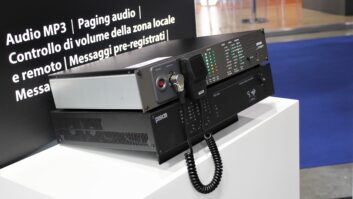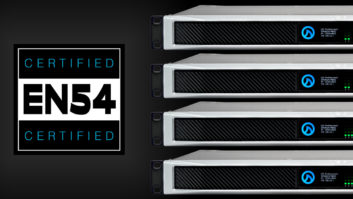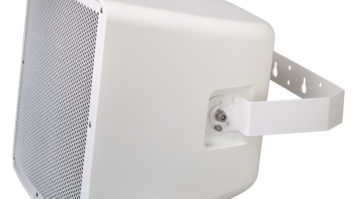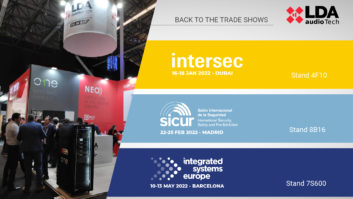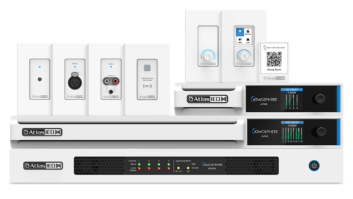
Voice alarm systems can meet European legal requirements without having been type-tested to the EN54 standard, a leading audio consultancy firm has said. According to RH Consulting, the European Construction Products Directive (CPD) makes specific allowance for the use of kit systems.
“A kit is a collection of components that don’t have to be type-tested and are assembled in a bespoke way to form a voice alarm system,” said RH Consulting’s Roland Hemming in an exclusive interview with Installation Europe.
Hemming and Lauren Rogers (pictured) of RH Consulting have announced the publication of a new white paper addressing the treatment of voice alarm equipment within the CPD.
While the EN 54 standards were first released in 2008, they have only become enforceable since 1 April 2011, when they were introduced under the Construction Products Directive (CPD). Confusion within the industry about whether or not products need to comply with EN 54 led Hemming and Rogers to investigate the issue of scratch, addressing the origins of the standards, why they were created, and the full scope of the legal obligations.
Rogers commented: “We felt that it was crucial to our industry to clarify what EN 54 and the CPD really mean for manufacturers, consultants and integrators in terms of compliance. Many people think it means that every single product specified as part of a voice alarm system has to obtain EN 54 compliance. However, our detailed research has proved that there are other ways of complying with the CPD that don’t require each individual product to be EN 54-marked; the most relevant for our business is by using a ‘Kit’ system.”
A ‘kit’ is defined as an assembly of non type-tested components that together comprise a system. More details on kits can be found in the white paper.
“It is important to note that this is not about manufacturers trying to avoid their responsibilities by not getting their equipment tested,” noted Hemming. “On the contrary, in large, complex, high power projects such as stadia, transport hubs, conference centres, etc, the use of a bespoke kit system will actually reduce risk as you are free to use equipment that is appropriate for the task in hand rather than being limited to using inappropriate type-tested product that is not up to the job. The aim of the white paper is to clearly define how the law relates to voice alarm systems and the steps that manufacturers, consultants and integrators need to take in order to comply with law and build safe systems.”
PLASA is among the groups to have commented positively on the report. “This document clearly sets out that a kit system approach is an acceptable and legal method for installing a voice alarm system within the EEA,” states technical resources manager Ron Bonner, who is responsible for technical support and standards advice at PLASA. “PLASA will support its members who wish to provide kit systems for that purpose.”
For consultants and manufacturers wishing to adopt the kit system approach for their projects, sample wording has been provided at the end of the white paper for use in their documentation.
The white paper can be freely downloaded from the RH Consulting website: www.rhconsulting.eu.
Voice alarm systems can meet European legal requirements without having been type-tested to the EN54 standard, a leading audio consultancy firm has said.
According to RH Consulting, the European Construction Products Directive (CPD) makes specific allowance for the use of kit systems. “A kit is a collection of components that doesn’t have to be type-tested and are assembled in a bespoke way,” said RH’s Roland Hemming in an exclusive interview with Installation Europe.
